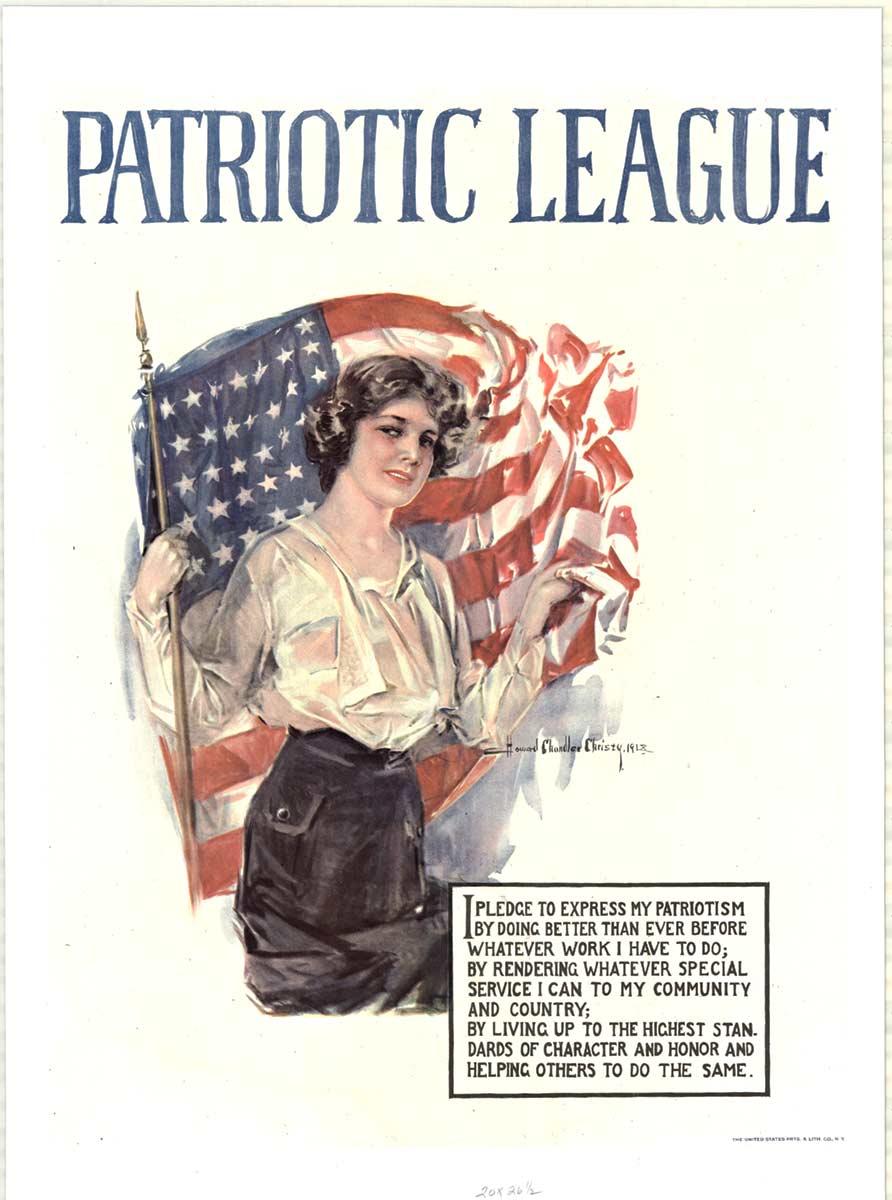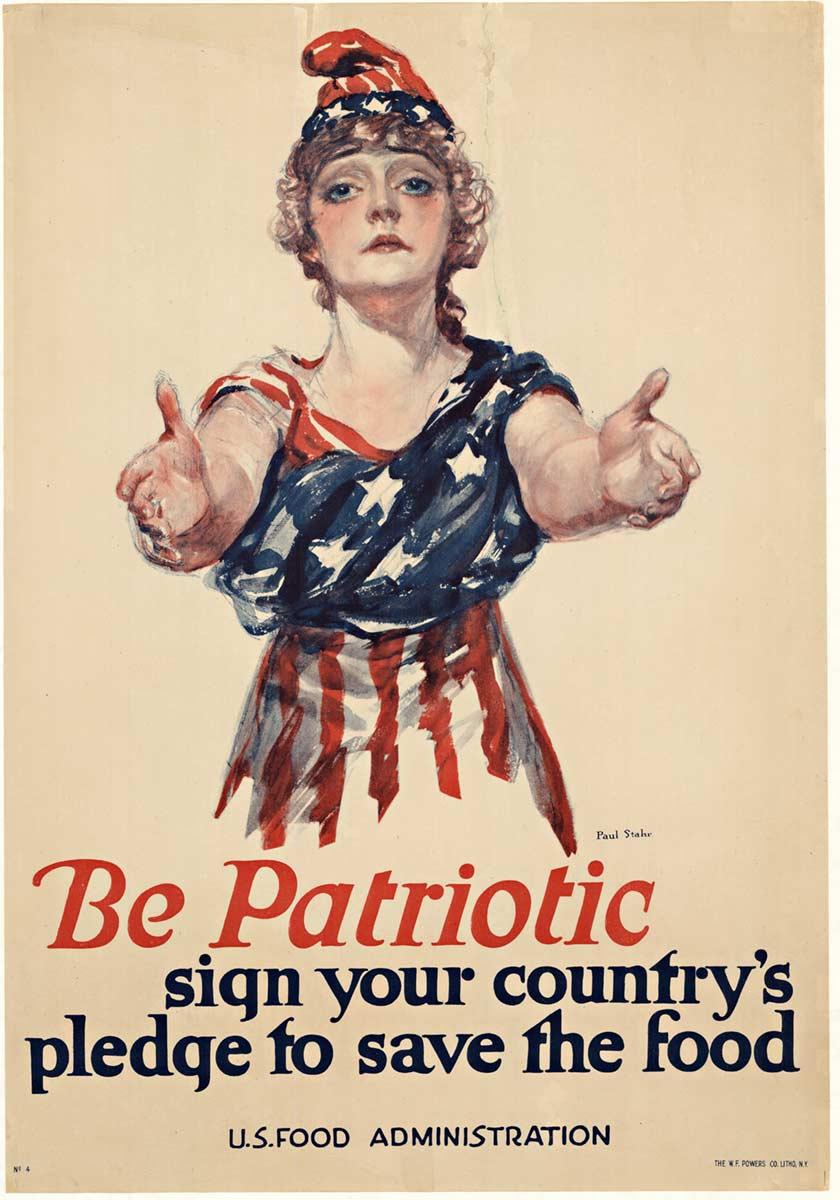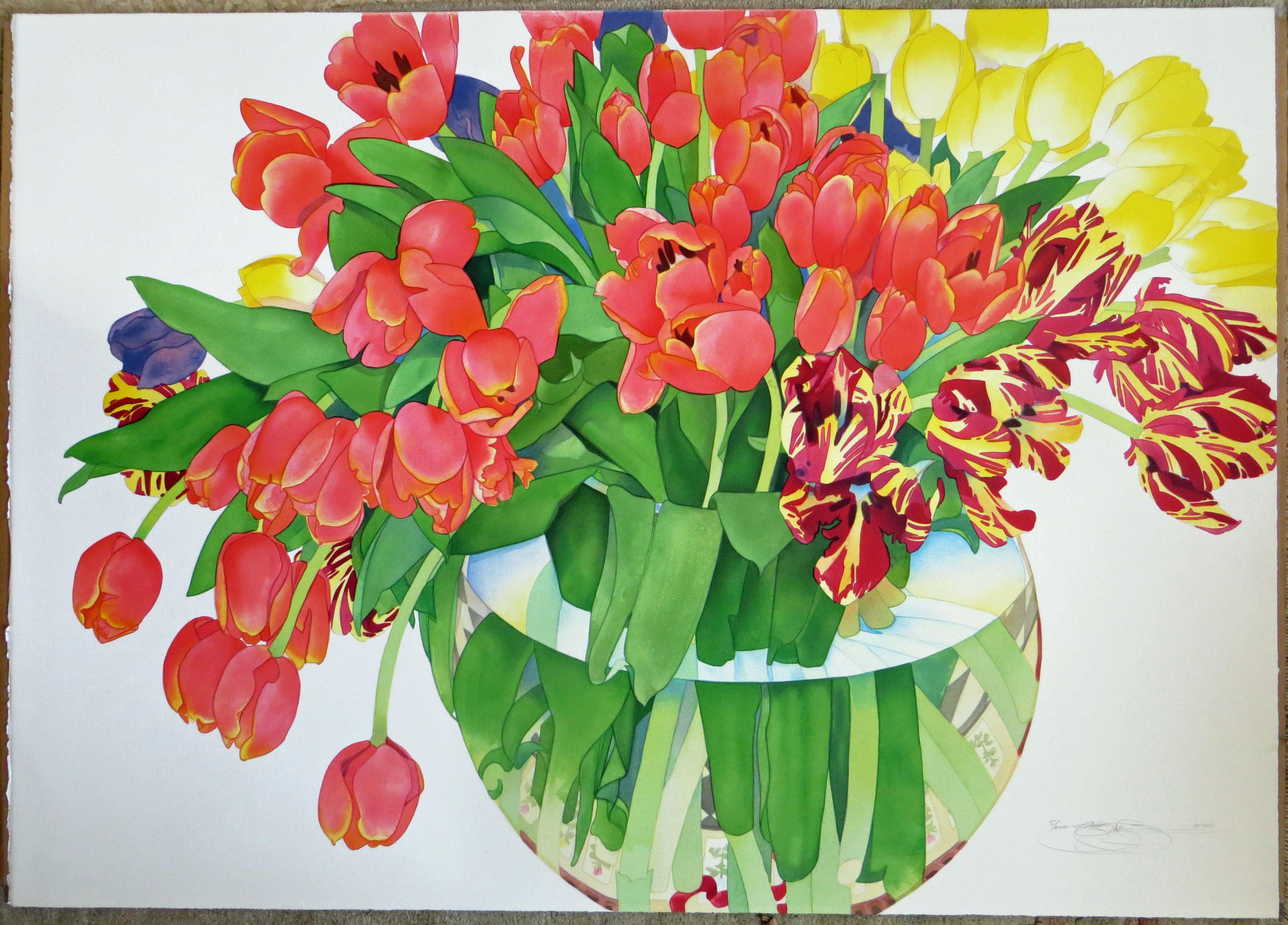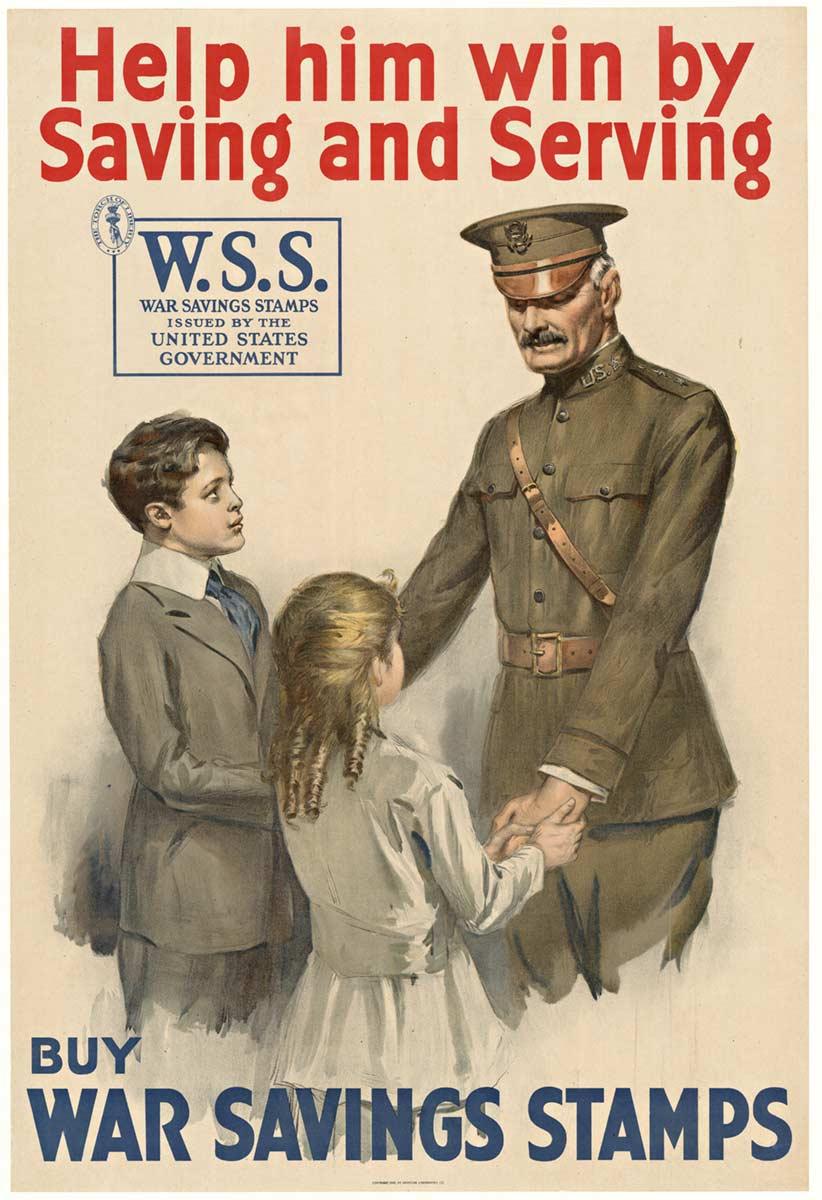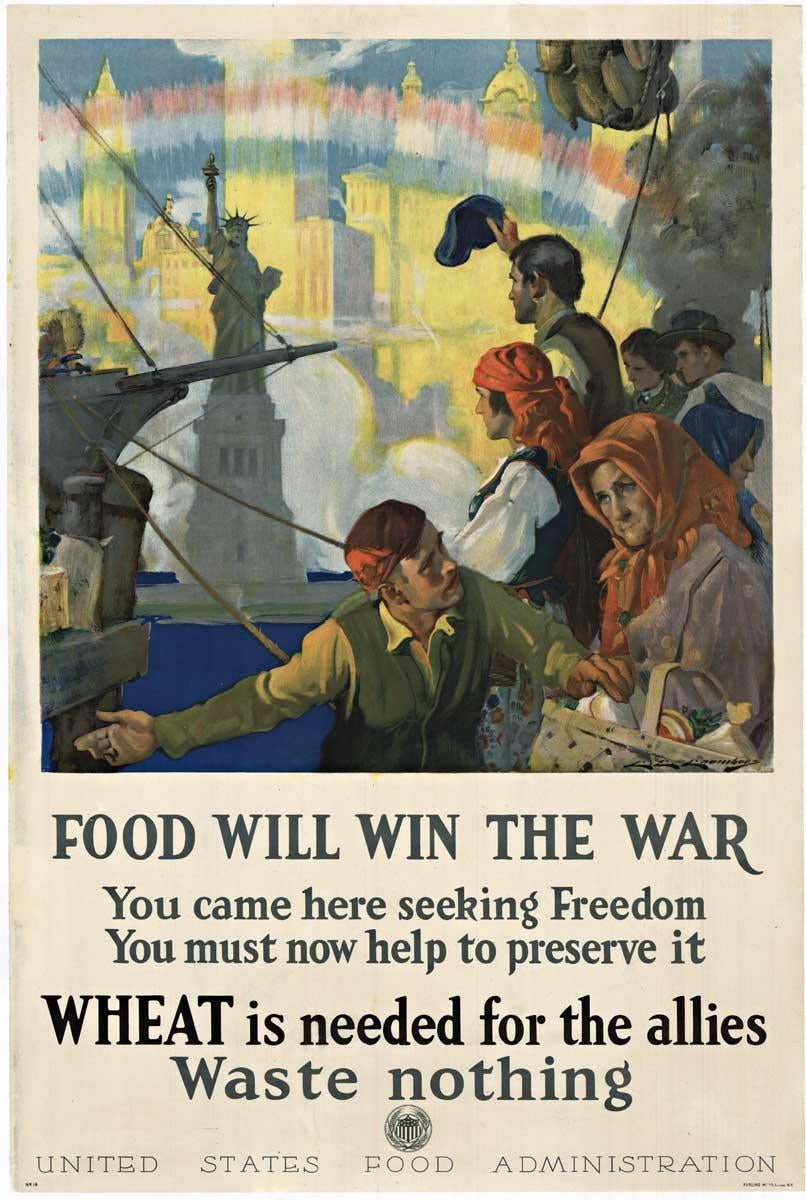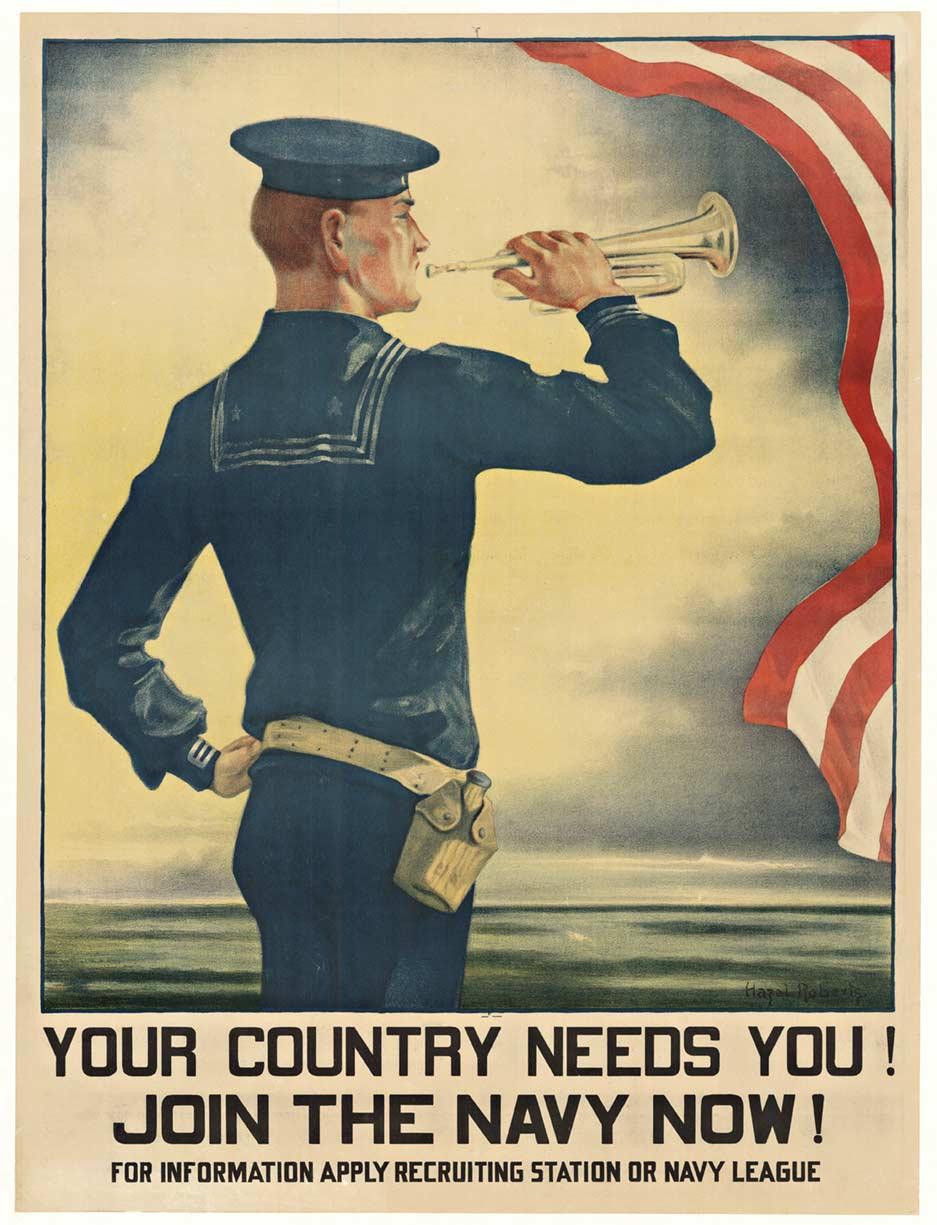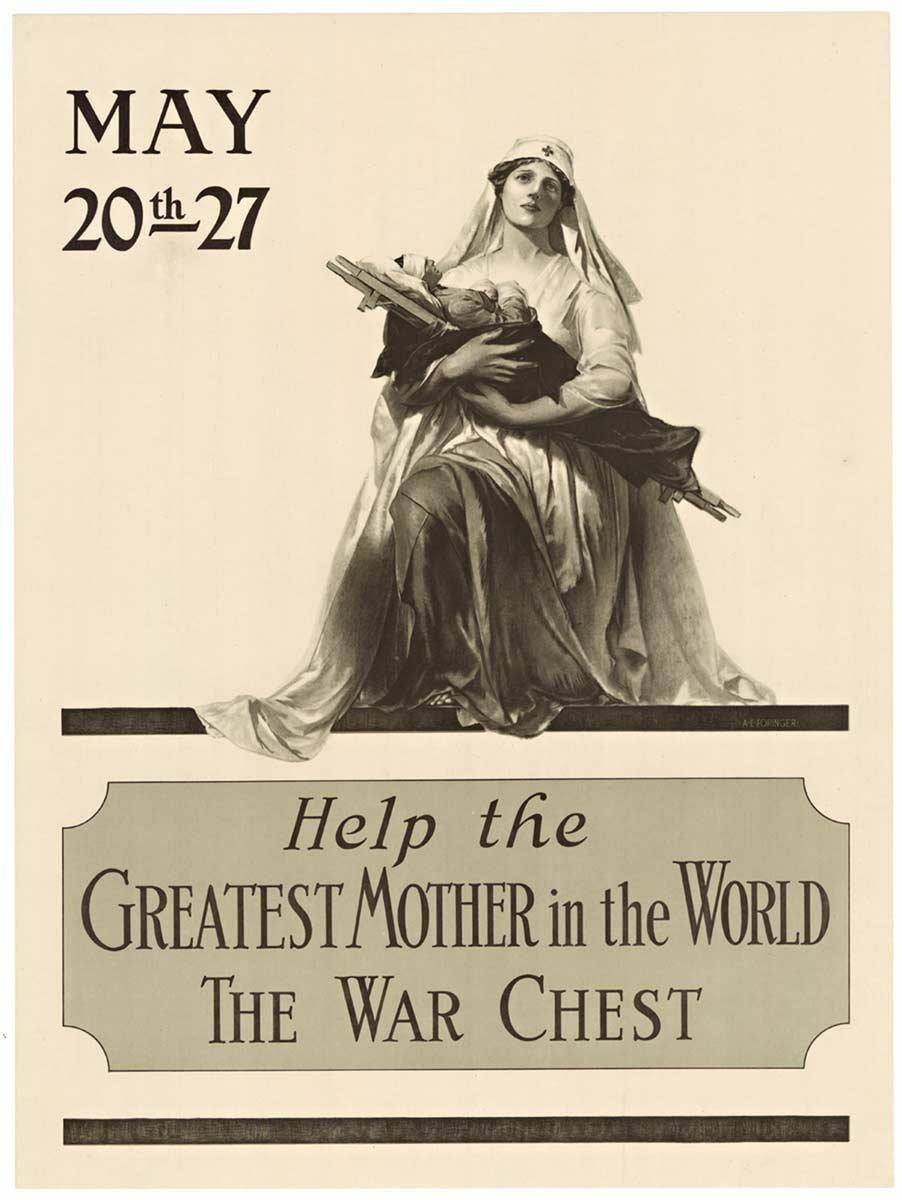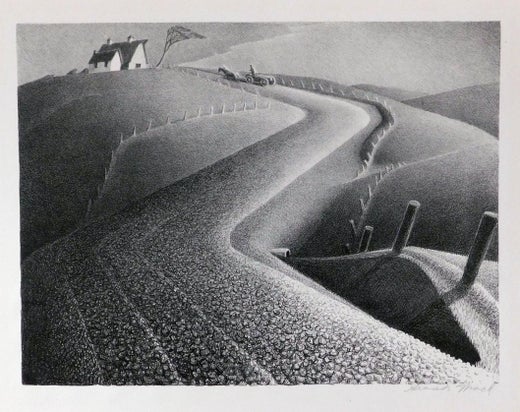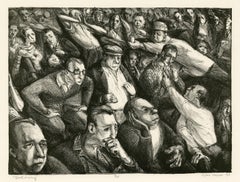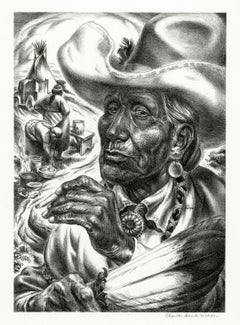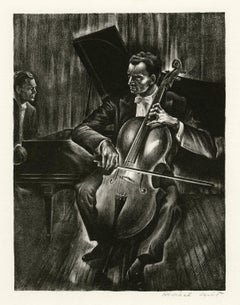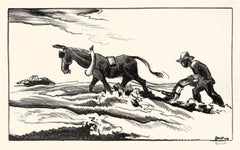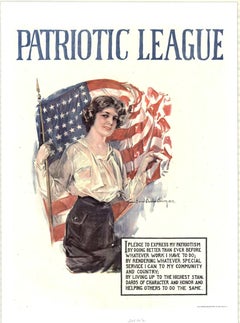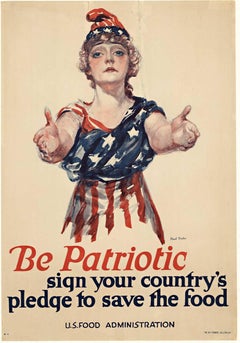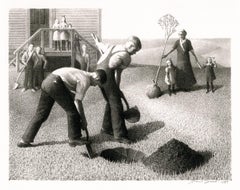
Tree Planting Group — 1930s American Regionalism
Want more images or videos?
Request additional images or videos from the seller
1 of 3
Grant WoodTree Planting Group — 1930s American Regionalism1937
1937
About the Item
- Creator:Grant Wood (1891 - 1942, American)
- Creation Year:1937
- Dimensions:Height: 8.88 in (22.56 cm)Width: 11.88 in (30.18 cm)
- Medium:
- Movement & Style:
- Period:
- Condition:
- Gallery Location:Myrtle Beach, SC
- Reference Number:Seller: 1040891stDibs: LU532310432722
Grant Wood
One of the major American Regionalist painters along with Thomas Hart Benton and John Steuart Curry, Grant Wood was born in Anamosa, Iowa, and spent his childhood in Cedar Rapids. Unlike Curry and Benton, he never moved East but remained in the Middle West where he found inspiration for his paintings of prosperous farms and people reflecting idealized American values. However, his work was set apart from many regionalists in that provoked both laughter and social indignation. A good example Daughters of Revolution, 1932, depicting the aloof smugness of women who regarded themselves as emblematic of the country's founding values This painting was a retaliation by Wood against DAR members who had criticized him for completing their window in Germany instead of America. Much of his satire was good natured and humorous. For two summers, Wood attended the Minneapolis School of Design and Handicraft and Normal Art as a student of Ernest Batchelder, and he had brief times of study at Iowa State University and the Art Institute of Chicago from 1913 to 1916. After World War I, he taught high school art in Cedar Rapids. Asserting that he "had to go to France to appreciate Iowa," he had several trips abroad, and in 1923 enrolled in the Academie Julian in Paris, but he determined to make his life in Iowa because "all the really good ideas I'd ever had came to me while I was milking a cow." In 1932, he was co-founder of the Stone City Art Colony and Art School and he became director of the Public Works Art Project in Iowa. He was also an Associate Professor of Fine Arts at the University of Iowa. His work can be divided into two periods, the first being views of Cedar Rapids, other landscapes including scenes of Europe, and a few portraits. However, in 1928, his work changed when he traveled to Munich to oversee the making of a stained-glass window for the Cedar Rapids Veterans Memorial Building commissioned by the Daughters of the American Revolution. Seeing the severe, austere new style of painting in Germany combined with work from the late Gothic period, he developed a unique new style of his own that treated mid-western subjects with Gothic overtones, satire, and caricature. In 1930, he produced his first major landscape painting, Stone City, that had exaggerated perspective and unique naive treatment. From that time, his paintings had a simple innocence and fantasy that transported the viewer into another world, often that of a child. He also did many murals and a few lithographs, completing nineteen between 1937 and 1942, the year he died of cancer at age 50 in Iowa City. Sources include:
Matthew Baigell, Dictionary of American Art
Michael David Zellman, 300 Years of American Art
About the Seller
5.0
Recognized Seller
These prestigious sellers are industry leaders and represent the highest echelon for item quality and design.
Platinum Seller
Premium sellers with a 4.7+ rating and 24-hour response times
Established in 1995
1stDibs seller since 2016
299 sales on 1stDibs
Typical response time: 1 hour
Associations
International Fine Print Dealers Association
Authenticity Guarantee
In the unlikely event there’s an issue with an item’s authenticity, contact us within 1 year for a full refund. DetailsMoney-Back Guarantee
If your item is not as described, is damaged in transit, or does not arrive, contact us within 7 days for a full refund. Details24-Hour Cancellation
You have a 24-hour grace period in which to reconsider your purchase, with no questions asked.Vetted Professional Sellers
Our world-class sellers must adhere to strict standards for service and quality, maintaining the integrity of our listings.Price-Match Guarantee
If you find that a seller listed the same item for a lower price elsewhere, we’ll match it.Trusted Global Delivery
Our best-in-class carrier network provides specialized shipping options worldwide, including custom delivery.More From This Seller
View AllNinth Inning
Located in Myrtle Beach, SC
Sylvia Mayzer Rantz, 'Ninth Inning', lithograph, 1949, edition 24. Signed, dated, titled, and numbered '9/24' in pencil. A fine, richly-inked impression, on cream wove paper. The ful...
Category
1940s American Realist Figurative Prints
Materials
Lithograph
Old Injun
By Charles Banks Wilson
Located in Myrtle Beach, SC
Charles Banks Wilson, 'Old Injun', lithograph, 1948, edition 250, Hunt 39. Signed in pencil. A fine, richly-inked impression, on off-white wove paper, with full margins (1 3/4 to 2 inches), in excellent condition. Published by Associated American Artists.
Impressions of this work are in the permanent collections of the following institutions: Ackland Art Museum, Georgetown University...
Category
1940s American Realist Figurative Prints
Materials
Lithograph
Duet — Cellist and Pianist, 1930s Lithograph
Located in Myrtle Beach, SC
Herschel Levit 'Duet', lithograph, c. 1937. Signed in pencil. A fine, richly inked impression, on cream wove paper, with full margins (1 1/2 x 2 inches)...
Category
1930s American Realist Figurative Prints
Materials
Lithograph
$600 Sale Price
20% Off
'Plowing It Under' — WPA Era American Regionalism
By Thomas Hart Benton
Located in Myrtle Beach, SC
Thomas Hart Benton, 'Goin' Home', lithograph, 1937, edition 250, Fath 14. Signed in pencil. Signed in the stone, lower right. A fine, richly-inked impression, on off-white, wove pape...
Category
1930s American Realist Figurative Prints
Materials
Lithograph
'Goin' Home' — WPA Era American Regionalism
By Thomas Hart Benton
Located in Myrtle Beach, SC
Thomas Hart Benton, 'Goin' Home', lithograph, 1937, edition 250, Fath 14. Signed in pencil. Signed in the stone, lower right. A fine, richly-inked impression, on off-white, wove paper, with margins, in excellent condition. Published by Associated American Artists. Archivally matted to museum standards, unframed.
Image size 9 7/16 x 11 7/8 inches; sheet size 10 3/4 x 13 5/16 inches.
Impressions of this work are held in the following museum collections: Figge Art Museum, Georgetown University Art Collection, Indianapolis Museum of Art, Library of Congress, Metropolitan Museum of Art, and the Nelson-Atkins Museum of Art.
ABOUT THE ARTIST
“Benton’s idiom was essentially political and rhetorical, the painterly equivalent of the country stump speeches that were a Benton family tradition. The artist vividly recalled accompanying his father, Maecenas E. Benton — a four-term U.S. congressman, on campaigns through rural Missouri. Young Tom Benton grew up with an instinct for constituencies that led him to assess art on the basis of its audience appeal. His own art, after the experiments with abstraction, was high-spirited entertainment designed to catch and hold an audience with a political message neatly bracketed between humor and local color.”
—Elizabeth Broun “Thomas Hart Benton: A Politician in Art,” Smithsonian Studies in American Art, Spring 1987.
Born in 1889 in Neosho, Missouri, Thomas Hart Benton spent much of his childhood and adolescence in Washington, D.C., where his father, Maecenas Eason Benton, served as a Democratic member of Congress from 1897 to 1905. Hoping to prepare Benton for a political career, his father sent him to Western Military Academy. After nearly two years at the academy, Benton persuaded his mother to support him in attending the Art Institute of Chicago for two years, followed by two additional years at the Académie Julian in Paris.
In 1912, Benton returned to America and moved to New York to pursue his artistic career. One of his first jobs involved painting sets for silent films, which were being produced in Fort Lee, New Jersey. Benton credits this experience with equipping him with the skills necessary to create his large-scale murals.
When World War I broke out, Benton joined the Navy. Stationed in Norfolk, Virginia, he was assigned to create drawings of camouflaged ships arriving at Norfolk Naval Station. These renderings were used to identify vessels that might be lost in battle. Benton later remarked that being a "camofleur" profoundly impacted his career: "When I came out of the Navy after the First World War," he said, "I made up my mind that I wasn’t going to be just a studio painter, a pattern maker in the fashion then dominating the art world—as it still does. I began to think of returning to the painting of subjects, subjects with meanings, which people, in general, might be interested in."
While developing his Regionalist vision, Benton also taught art, first at a city-supported school and later at The Art Students League from 1926 to 1935. One of his students was a young Jackson Pollock, who regarded Benton as both a mentor and father figure. In 1930, Benton was commissioned to paint a mural for the New School for Social Research. The "America Today" mural, now permanently exhibited at the Metropolitan Museum of Art, led to many more commissions as Benton’s work gained wide recognition.
The Regionalist Movement became popular during the Great Depression of the 1930s. Painters such as Benton, Grant Wood, and John Steuart Curry rejected modernist European influences, choosing instead to depict realistic images of small-town and rural life—comforting representations of the American heartland during a period of upheaval. Time Magazine referred to Benton as "the most virile of U.S. painters of the U.S. Scene," featuring his self-portrait on the cover of a 1934 issue that included a story titled "The Birth of Regionalism."
In 1935, Benton left New York and returned to Missouri, where he taught at the Kansas City Art Institute. His outspoken criticism of modern art, art critics, and political views alienated him from many influential figures in both political and art circles. Nonetheless, Benton remained true to his beliefs, continuing to create murals, paintings, and prints that captured enduring images of American life. The dramatic and engaging characteristics of Benton’s artwork drawn the attention of Hollywood producers, leading him to create illustrations and posters for films, including his famous lithographs for the film adaptation of John Steinbeck’s "The Grapes of Wrath," produced by Twentieth Century Fox.
During the 1930s, The Limited Editions Club of New York asked Benton to illustrate special editions of three of Mark Twain’s books...
Category
1930s American Realist Figurative Prints
Materials
Lithograph
'Pipe and Brawn' — WPA Era American Realism
By James Allen
Located in Myrtle Beach, SC
James Allen, 'Pipe and Brawn,' 1937, lithograph, edition 40. Signed and annotated 'Ed/40' in pencil. A superb, richly inked impression on cream wove paper, the full sheet with margin...
Category
1930s American Realist Figurative Prints
Materials
Lithograph
You May Also Like
Tulips in a Vase
By Gary Bukovnik
Located in San Francisco, CA
This artwork "Tulips in a Vase" 1995 is an original color lithograph on Wove paper by noted American artist Gary Bukovnik, born 1947. It is hand signed, dated and numbered 169/200 in...
Category
Mid-20th Century American Realist Still-life Prints
Materials
Lithograph
Flowers, very large lithograph
By Gary Bukovnik
Located in San Francisco, CA
This artwork "Flowers" .1996 is a large original color lithograph on Wove paper by noted American artist Gary Bukovnik, born 1947. It is hand signed, dated and numbered 13/200 in whi...
Category
Mid-20th Century American Realist Still-life Prints
Materials
Lithograph
Original Patriotic League vintage poster Christy Girl
By Howard Chandler Christy
Located in Spokane, WA
Original vintage poster: Patriotic League . Original Howard Chandler Christy's 1918 "Patriotic League" authentic World War 1 lithographic poster. Linen-backed and in excellent condition. This Christy girl...
Category
1910s American Realist Portrait Prints
Materials
Lithograph
$1,440 Sale Price
20% Off
Original "Be Patriotic sign your country's pledge to save the food" poster
Located in Spokane, WA
Original WW1 poster: "Be Patriotic sign your country's pledge to save the food." U. S. Food Administration. Miss Liberty calls with outstretch...
Category
1910s American Realist Figurative Prints
Materials
Lithograph
Tulips in a Round Vase
By Gary Bukovnik
Located in San Francisco, CA
This artwork, titled "Tulips in a Round Vase" and dated 2000, is an original color lithograph on Arches paper by noted American artist Gary Bukovnik, born 1947. It is signed and numb...
Category
Early 2000s American Realist Still-life Prints
Materials
Lithograph
Original Buy War Savings Stamps WW1 lithograph vintage poster
Located in Spokane, WA
Original WW1 vintage poster: HELP HIM WIN BY SAVING AND SERVING, W.S.S., BUY WAR SAVINGS STAMPS. Original World War 1 vintage stone lithograph. Museum archival linen backed and...
Category
1910s American Realist Figurative Prints
Materials
Lithograph
Recently Viewed
View AllMore Ways To Browse
Shepard Fairey Joan Jett
Shepard Fairey Relief Print
Simon And Garfunkel Poster
St Rose Lima
Suite Vollard Bloch 135 Picasso
Sur La Plage Renoir
Suzuki Hozumi Harunobu
Swans In Flight Oil Painting
Takahashi Murakami
Takahashi Shotei Prints
Takashi Murakami Enso
Takashi Murakami Panda With Cubs
Tan Tan Bo
The Convict And His Companion
The Dancer Brockhurst
Theatre Optique
Theo Tobiasse Seder
Tom Blackwell On Sale
